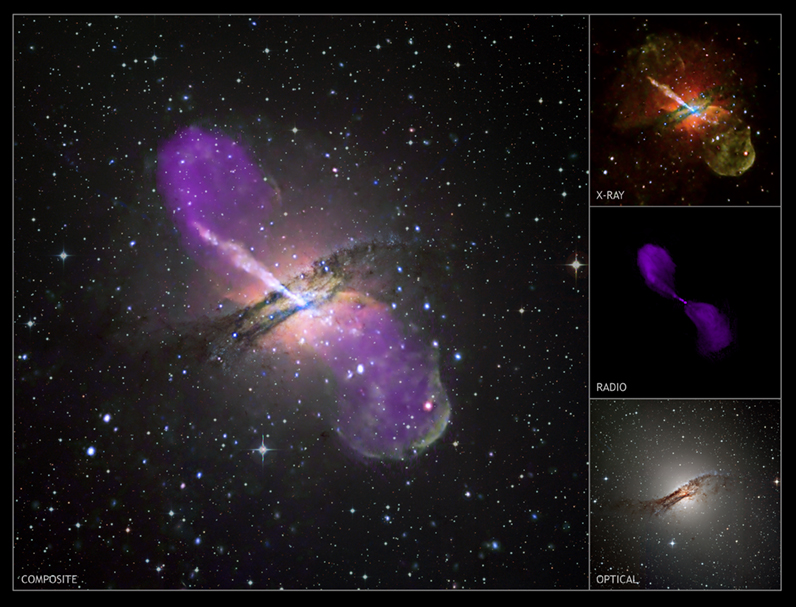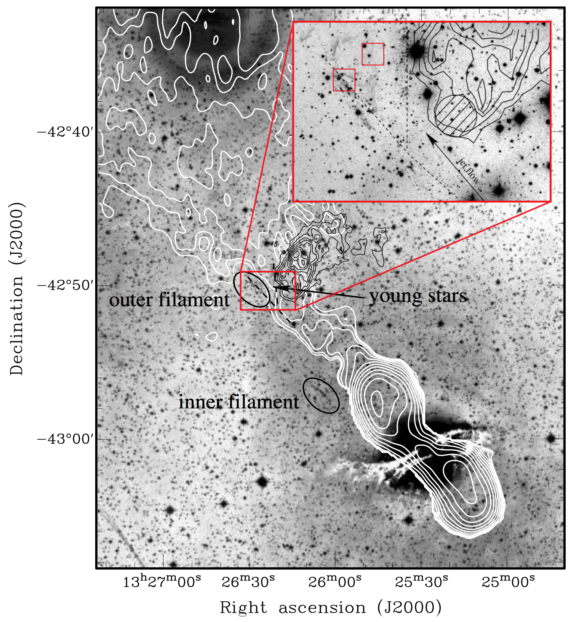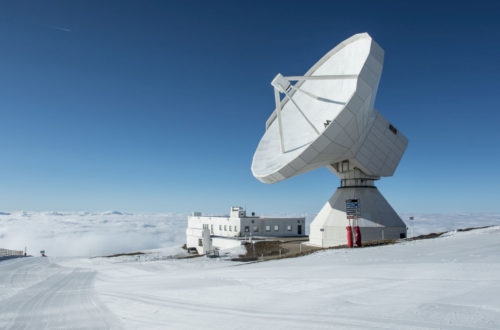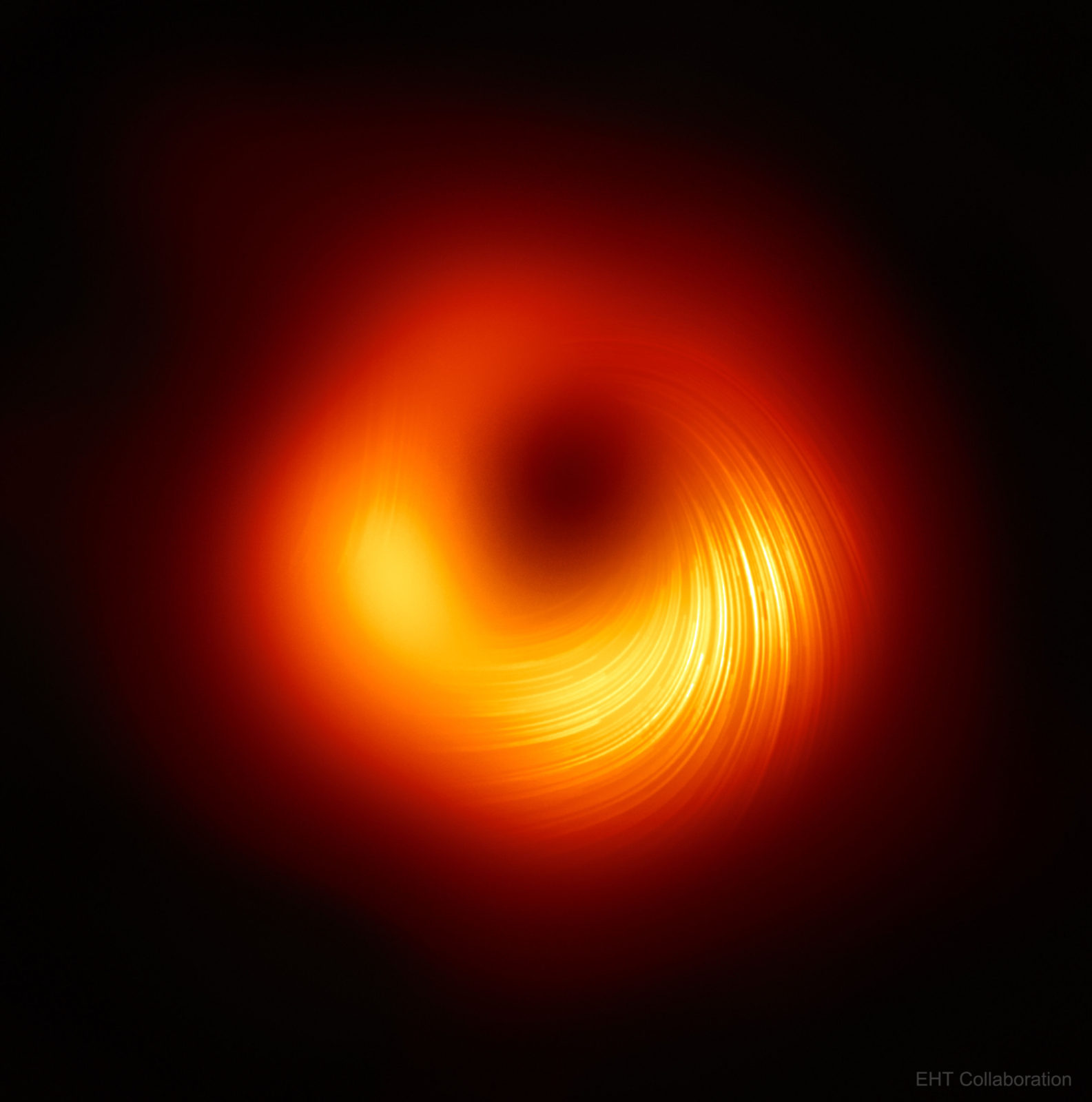The powerful jets launched by a supermassive black hole feeding on material at the centre of a galaxy, comprise some of the most powerful and highly energetic sources of sustained energy in the known Universe. Launched with velocities close to the speed of light, jets transport large amounts of energy from the central regions of their host galaxies and deposit it into their surroundings. Jets emit radiation across the entire electromagnetic spectrum, but emit radiation particularly strongly at radio frequencies. As the jets travel outwards from the central region of their host galaxy they can come into contact with a variety of obstacles, alongside complex and even hostile environments, which can drastically affect the evolution of the jet.
The interstellar medium, the material that fills the space between stars in galaxies, is a particularly complex environment that jets pass through as they make their way out of their host galaxy. Historically the interstellar medium (ISM) was thought to be smooth and uniform- the regions between stars in galaxies were thought to be filled with material at an almost constant density. However, the first high-resolution spectroscopy observations of bright stars conducted in the late 1930s revealed complex gas motions in the ISM— leading to the realisation that the ISM is not uniform but clumpy, with ‘clouds’ of gas permeating the regions between the stars. During their passage out of their host galaxy jets can therefore battle a host of these ISM gas clouds, smashing through them as they traverse the ISM.
Despite the immense power and near-light speed velocity of the jet, battling a cloud is not without its consequences, and jets may not emerge entirely unscathed. Since jets are relatively light (less dense) compared to their surroundings they are highly susceptible to the conditions in their local environments. ISM clouds can be one hundred or even one thousand times more dense than the jet and can therefore considerably affect jet evolution. The interaction between a relativistic jet and a cloud can change the trajectory of the jet, promote the growth of instabilities within it and cause it to twist, wiggle and even bend.

Figure 1. X-ray, radio and optical images alongside a composite image of the nearby galaxy Centaurus A. The jets launched by the supermassive black hole at the centre of the galaxy are shown in purple. Complex interactions between the jets and interstellar medium (ISM) clouds are observed in Centaurus A. (Image credit: X-ray: NASA/CXC/CfA/R.Kraft et al; Radio: NSF/VLA/Univ.Hertfordshire/M.Hardcastle; Optical: ESO/WFI/M.Rejkuba et al.)
The fate of the clouds following their interaction with the jet has important implications for the evolution of the galaxy. Following an interaction with a jet an ISM cloud may be completely destroyed, compressed, heated and/or flung away from the jet at high speed. The final fate of the cloud is typically determined by (1) its density (2) whether the jet hits the cloud head-on or merely glances off it and (3) how powerful the jet is.
A head on collision between a jet and cloud is likely to destroy the cloud completely. However, if the jet merely glances off the cloud then a large portion of the cloud may survive the encounter. A head-on collision with a very dense cloud may result in the large deflection/distortion of the jet. Low density clouds will typically be flung away from the jet at high velocities, forming winds of clumpy gas (Morganti et al. 2007, Mahony et al. 2013, Mukherjee et al. 2018). These winds are fast-moving, with velocities ranging from hundreds to thousands of kilometres per second.
The winds of clumpy gas are detected in the optical, UV and X-ray spectra of many galaxies, and effectively remove massive amounts of gas from the central regions of the galaxy. This removal of gas can affect how the galaxy evolves, reducing the rate are which stars are formed and limiting the growth of the central supermassive black hole. In some cases however, the direct interaction between jets and ISM clouds can actually promote the growth of stars (e.g. Oosterloo & Morganti 2004).

Image taken from figure 1 of Santoro et al. 2015 .
Centaurus A (see Figure 1) is an excellent source to study the interactions between jets and the ISM. Only 12 million light years away from Earth, Centaurus A is one of the closest radio galaxies to us making it ideal to not only study the interaction between the jet and the ISM, but also the energetic impact of the jet on its surroundings. Centaurus A has a particularly complex region, known as the ‘outer filament’, where interactions between the jet and ISM clouds are thought to occur. Significant observations and research have targeted this region in order to study jet-cloud interactions in detail. In Centaurus A the interaction between the jet and the ISM appears to promote the growth of stars as shown in Figure 2 (see also Mould et al. 2000, Oosterloo & Morganti 2004, Santoro et al. 2015).
Understanding how jets evolve in the different environments they travel through is important in order to build a complete model of jet evolution. Studying the interaction of jets with the interstellar medium can provide insights into how galaxies, jets and black holes co-evolve.



